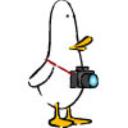Yahoo Answers is shutting down on May 4th, 2021 (Eastern Time) and beginning April 20th, 2021 (Eastern Time) the Yahoo Answers website will be in read-only mode. There will be no changes to other Yahoo properties or services, or your Yahoo account. You can find more information about the Yahoo Answers shutdown and how to download your data on this help page.
Trending News
The Photographic industry?
Just got a few questions about the photographic industry, mainly about developing a portfolio of work.
What is the best way of presenting you portfolio when it comes to producing a physical portfolio? i know some people go for books and others go for folders.
Where do most photographers go wrong when it comes to creating a portfolio of work?
How many images should a folio contain and also should i make it diverse or keep it more on one track?
Also have a few extra ones more about it's usefulness...
Does having a physical portfolio make it easier for you to talk and present your work to clients?
Is a portfolio made for you or do you make it for clients?
and last one, do clients favour photographer that have a physical portfolio over those that don't?
3 Answers
- Steve PLv 78 years agoFavorite Answer
Don't take my answers as gospel, they are just based on my own, and others', experience.
"What is the best way of presenting you portfolio when it comes to producing a physical portfolio? i know some people go for books and others go for folders"
I like a folder. You can always remove and replace photos in a folder as your work improves / changes. When you print a book, ... well that is it for all time, and it will most likely no longer be a fit for your future work or needs.
"Where do most photographers go wrong when it comes to creating a portfolio of work"
Having too many photos and not having photos that are a "match" for the client.
"How many images should a folio contain and also should i make it diverse or keep it more on one track"
It is always better to have perhaps only a couple dozen photos that are VERY GOOD as opposed to 50 that are mediocre. Also, ideally, the portfolio needs to be a "fit" for the viewer. By that I mean, if you are wanting to have photos displayed in an art gallery, don't be showing a portfolio of wedding shots, and vice versa. A prospective wedding couple wants to see great wedding shots, not landscapes or automobiles. If approaching a commercial client, the photos can be more diverse, but still need to have some relevance to the client, but the portfolio needs to be a demonstration of your talents to capture good photos in various conditions / circumstances.
"Does having a physical portfolio make it easier for you to talk and present your work to clients"?
YES YES YES. Forcing someone to have to go to a website or look at photos on some type of digital device will never take the place or real, tangible, quality photos that can be held in hand. Many people's time is valuable. They can open and look at a book in a fraction of the time it takes to try to view some type of digital media. Often, if there is no book, ... you will get no further. Always have a REAL portfolio. In many cases, the "old ways" are still the best.
"Is a portfolio made for you or do you make it for clients"?
This sounds like you do not fully understand what a portfolio is. Of course it is made for YOU. A portfolio is a product used to present your talent / services, ... it is not something you make for a client. (Coming back to this later, I think I mis-understood your meaning. In most cases, yes, the portfolio is best if it is "made for" the client so the photos match their field of interest. Many photographers have several portfolios for different occasions and types of clients).
"do clients favour photographer that have a physical portfolio over those that don't"?
I have already hit on this subject. Yes, I have found a client always prefers to see actual, physical photos over any other type of media. (There can be exceptions, such as when a potential client may be requesting to have a CD of photos sent to them, but that is a very specific condition). In the vast majority of cases, you need to have a physical portfolio.
steve
- 5 years ago
Many people steer away from DSLR cameras because they feel daunted by the range of technical capabilities that these seemingly complex cameras offer, but in actuality, learning to use a DSLR camera is simple when you are supported and guided by the expertise of a professional photographer. Go here https://tr.im/CPeYc
This highly practical course will teach you the technical skills needed to operate a DSLR camera correctly, as well as help you to apply these skills in practice. In addition, you will receive feedback from a professional photographer and fellow aspiring photographers through a supportive and unique online learning format. The course offers an exciting opportunity for individuals wanting to explore the world of digital photography, improve their picture-taking abilities and produce high-quality photographs, whether for personal or professional pursuit.
- 8 years ago
There is some fantastic advice about this on a regular free video podcast called The Grid, by Scott Kelby and the Photoshop Guys. I strongly urge you to go to iTunes, search for The Grid and look through to episodes devoted to this very subject. Not only that but there is a goldmine of free help on a vast range of photo-related topics. You could easily spend days on there! There is also a semi-regular feature where viewers' work is submitted for honest review, which is sometimes entertaining, sometimes enlightening. Go there now! :-)



